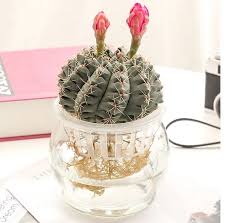The Art of Making Buddhist Vegetarian Cakes in Guangzhou: A Culinary Tradition of Mindfulness and Compassion

Guangzhou, a city rich in culture, history, and spirituality, is home to a vibrant Buddhist community that has shaped the region’s traditions and lifestyle. One of the most delightful and culturally significant aspects of Guangzhou’s Buddhist heritage is the art of making vegetarian cakes, a culinary tradition deeply rooted in the Buddhist principles of compassion, mindfulness, and non-violence. These cakes are not only delicious but also serve as offerings of respect and devotion, crafted with care and mindfulness to reflect the Buddhist way of life. In this article, we will explore the fascinating world of Buddhist vegetarian cakes in Guangzhou, examining their history, cultural significance, ingredients, and the meticulous art of making them.
1. The Cultural and Spiritual Significance of Buddhist Vegetarian Cakes
In Buddhist culture, food is considered more than just sustenance—it is a medium for spiritual practice and a means to cultivate virtues such as generosity, mindfulness, and compassion. The practice of offering food to the Buddha, monks, and other devotees is an essential part of Buddhist rituals, particularly in Mahayana Buddhism, which has a strong presence in Guangzhou.
Buddhist vegetarian cakes are traditionally made as offerings during various religious ceremonies, festivals, and temple rituals. These cakes are not just food; they symbolize the act of giving and the practice of non-violence, as they are made without any animal products. This reflects the Buddhist belief in respecting all forms of life and avoiding harm to sentient beings.
The cakes are often prepared and shared during important Buddhist holidays such as the Buddha’s Birthday, Vesak, and Lunar New Year, where they are offered to the Buddha as an expression of gratitude and devotion. They are also served at Buddhist temples during prayer sessions and meditations, as they promote a sense of community and mindfulness.
In Guangzhou, Buddhist vegetarian cakes are regarded as a symbol of purity and simplicity, reflecting the Buddhist principles of detachment from worldly desires and the cultivation of a pure heart and mind. The making of these cakes is not just a culinary act but a form of meditation, with each step imbued with a sense of mindfulness and respect for the ingredients.
2. The History of Buddhist Vegetarian Cakes in Guangzhou
The art of making Buddhist vegetarian cakes can be traced back to ancient times, with origins rooted in the Buddhist monastic tradition. As Buddhism spread throughout China, including Guangzhou, monks and nuns began preparing vegetarian meals in accordance with the Buddhist precepts, which emphasize non-harming and vegetarianism as a way of living in harmony with all sentient beings.
In the early days of Buddhism in China, food offerings were simple and often consisted of fruits, grains, and vegetables. However, over time, the practice of preparing more elaborate and aesthetically pleasing food offerings evolved. This led to the development of Buddhist vegetarian cakes, which were not only symbolic of devotion but also became a reflection of Chinese culinary artistry.
In Guangzhou, a city with a long history of Buddhist influence, the making of vegetarian cakes became an important part of temple life. Over the centuries, skilled chefs and temple cooks developed a variety of techniques and recipes for creating these cakes, each with its unique flavor, texture, and symbolism. The cakes were often made using ingredients that were locally available, reflecting the regional agricultural practices and seasonal offerings.
Today, the art of making Buddhist vegetarian cakes in Guangzhou has become a cherished tradition, passed down through generations. The cakes continue to play a central role in religious ceremonies and temple festivals, and their preparation is considered a form of spiritual practice, where the cook’s intention and mindfulness are as important as the final product.
3. The Ingredients of Buddhist Vegetarian Cakes
The ingredients used to make Buddhist vegetarian cakes are carefully selected to align with Buddhist principles. They are all plant-based, with no animal products such as meat, eggs, or dairy used in their preparation. This ensures that the cakes adhere to the Buddhist commitment to non-violence and respect for all life forms.
Some of the most common ingredients found in Buddhist vegetarian cakes include:
3.1. Flour and Starch
The base of most Buddhist vegetarian cakes is made from flour or starch. In traditional recipes, rice flour, wheat flour, or glutinous rice flour is used, depending on the texture and consistency desired. Glutinous rice flour, for example, is often used in steamed cakes, as it creates a chewy, sticky texture that is both satisfying and symbolic of the interconnectedness of all things in the Buddhist worldview.
3.2. Sweeteners
Buddhist vegetarian cakes often have a subtle sweetness, which comes from natural sweeteners such as rock sugar, palm sugar, or honey. These sweeteners are preferred over refined sugar, as they are considered more wholesome and less indulgent. The sweetness symbolizes the sweetness of the Dharma, the Buddha’s teachings, which bring joy and peace to those who follow them.
3.3. Lotus Seeds
Lotus seeds are a common ingredient in Buddhist vegetarian cakes and have deep symbolic meaning in Buddhism. The lotus flower is revered in Buddhist teachings for its ability to bloom in muddy waters, symbolizing the potential for spiritual growth and enlightenment amidst the challenges of life. Lotus seeds are often used in filling, providing a soft, nutty texture to the cakes, and are believed to bring good luck and peace to those who consume them.
3.4. Red Bean Paste
Red bean paste, made from azuki beans, is another popular ingredient in Buddhist vegetarian cakes. The beans are cooked, sweetened, and mashed into a smooth paste, which is then used as a filling for cakes. In Chinese culture, red beans symbolize good fortune and are often associated with the belief in eliminating negative energy. The paste also provides a rich, slightly sweet flavor, complementing the other ingredients.
3.5. Fruits and Nuts
Fruits such as dates, longan, and goji berries are often added to the cakes, offering both natural sweetness and nutritional benefits. Nuts, particularly almonds and walnuts, are also commonly used, adding crunch and texture. These ingredients are seen as a representation of abundance and prosperity, which are important themes in Buddhist teachings about generosity and abundance in the spiritual realm.
3.6. Aromatic Spices and Herbs
To enhance the flavor and fragrance of the cakes, a variety of aromatic spices and herbs are incorporated. These can include ginger, cinnamon, cardamom, and osmanthus flowers. These ingredients not only add complexity to the flavor profile but also contribute to the overall sense of mindfulness and sensory enjoyment that comes from eating these cakes.
4. The Art of Making Buddhist Vegetarian Cakes
The process of making Buddhist vegetarian cakes is a delicate and mindful practice that requires skill, patience, and attention to detail. The cakes are usually made by hand, with each step performed carefully and with intention. Here’s an overview of the general process:
4.1. Preparing the Ingredients
The first step in making Buddhist vegetarian cakes is preparing the ingredients. This involves washing, soaking, and grinding various components like lotus seeds, beans, and nuts. For steamed cakes, the flour or starch is prepared by sifting it to ensure a smooth texture. All ingredients must be measured and handled with care, as each one contributes to the overall flavor and texture of the cake.
4.2. Mixing and Shaping
Once the ingredients are prepared, the next step is mixing and shaping the dough or batter. Depending on the type of cake being made, this can involve kneading dough or combining different fillings with the cake base. The shaping process is an essential part of the art, as the cakes are often molded into intricate forms, such as lotus flowers, Buddha symbols, or geometric shapes. These shapes are symbolic, representing the beauty and purity of the Buddha’s teachings.
4.3. Steaming or Baking
After the cakes are shaped, they are either steamed or baked, depending on the recipe. Steaming is the more traditional method and results in soft, chewy cakes. It is considered a more mindful and spiritual practice, as the steam represents the life-giving force of the Buddha’s teachings. Baking, on the other hand, creates a slightly firmer texture and is often used for more decorative cakes.
4.4. Offering and Consumption
Once the cakes are prepared, they are offered to the Buddha or consumed in a mindful ceremony. In Buddhist tradition, food offerings are made with gratitude and respect, and the act of consuming the cakes is done with mindfulness and reverence for the interconnectedness of all beings. Sharing the cakes with others also promotes a sense of community and compassion.
5. Famous Buddhist Vegetarian Cake Shops in Guangzhou
In Guangzhou, several bakeries and shops specialize in Buddhist vegetarian cakes, offering both traditional recipes and innovative variations. These shops are popular among locals and tourists alike, and they play an important role in preserving the art of making Buddhist cakes. Some of the most notable establishments include:
5.1. Buddhist Vegetarian Cake House at Guangxiao Temple
Located near the historic Guangxiao Temple, one of Guangzhou’s most important Buddhist temples, this cake house is a local favorite for its authentic Buddhist vegetarian cakes. The shop offers a wide range of traditional cakes, including steamed lotus cakes, red bean-filled pastries, and glutinous rice cakes.
5.2. The Vegetarian Bakery at Lingnan Buddhist Culture Center
This bakery, located within the Lingnan Buddhist Culture Center, offers a selection of vegetarian cakes that are crafted with mindfulness and respect for Buddhist principles. The cakes here are made using organic ingredients, and the shop is known for its commitment to sustainability and ethical sourcing of ingredients.
6. Conclusion
The art of making Buddhist vegetarian cakes in Guangzhou is not only a culinary tradition but a spiritual practice that reflects the values of Buddhism. The cakes, with their symbolic ingredients and mindful preparation, are a testament to the devotion and compassion that define the Buddhist way of life. Whether served as offerings during religious ceremonies or enjoyed as part of daily practice, these cakes provide nourishment for both the body and the soul. In Guangzhou, the making and sharing of these cakes continues to be an important part of the city’s Buddhist heritage, preserving a tradition of mindfulness, compassion, and culinary excellence for future generations.

